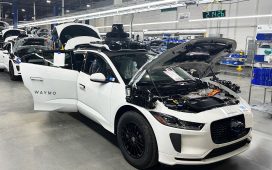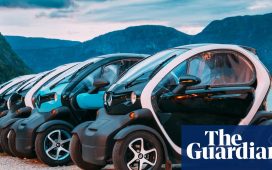Paraschiv, S. & Paraschiv, L. S. Trends of carbon dioxide (CO2) emissions from fossil fuels combustion (coal, gas and oil) in the EU member states from 1960 to 2018. Energy Rep. 6, 237–242 (2020).
International Energy Agency (IEA). CO2 Emissions in 2022. CO2 Emiss. 2022 (2023). https://doi.org/10.1787/12ad1e1a-en.
Vom Berg, C., Carus, M., Stratmann, M. & Dammer, L. Renewable Carbon as a Guiding Principle for Sustainable Carbon Cycles. Renew. Carbon Initiat. (2022).
Wang, H., Peng, X., Zhang, H., Yang, S. & Li, H. Microorganisms-promoted biodiesel production from biomass: A review. Energy Convers. Manag. X 12, 100137 (2021).
Shears, J. Is there a role for synthetic biology in addressing the transition to a new low‐carbon energy system? Microb. Biotechnol. 12, 824–827 (2019).
Srisawat, P., Higuchi-Takeuchi, M. & Numata, K. Microbial autotrophic biorefineries: Perspectives for biopolymer production. Polym. J. 54, 1139–1151 (2022).
Lee, R. A. & Lavoie, J.-M. From first- to third-generation biofuels: Challenges of producing a commodity from a biomass of increasing complexity. Anim. Front 3, 6–11 (2013).
Caltzontzin-Rabell, V. et al. Raw materials for a biomass-based industry. in Biofuels and Biorefining 25–52 (Elsevier, 2022). https://doi.org/10.1016/B978-0-12-824116-5.00010-6.
Yang, F., Hanna, M. A. & Sun, R. Value-added uses for crude glycerol–a byproduct of biodiesel production. Biotechnol. Biofuels 5, 13 (2012).
Food and Agriculture Organization of the United Nations (FAO). Sustainable Food and Agriculture. online at https://www.fao.org/sustainability/news/detail/en/c/1274219/ (2020).
Gitz, V., Meybeck, A., Lipper, L., Young, C. & Braatz, S. Climate change and food security: Risks and responses. Food and Agriculture Organization of the United Nations (2016).
Cotton, C. A., Claassens, N. J., Benito-Vaquerizo, S. & Bar-Even, A. Renewable methanol and formate as microbial feedstocks. Curr. Opin. Biotechnol. 62, 168–180 (2020).
Jiang, W. et al. Metabolic engineering strategies to enable microbial utilization of C1 feedstocks. Nat. Chem. Biol. 17, 845–855 (2021).
Ewis, D. et al. Electrochemical reduction of CO2 into formate/formic acid: A review of cell design and operation. Sep. Purif. Technol. 316, 123811 (2023).
Li, P., Gong, S., Li, C. & Liu, Z. Analysis of routes for electrochemical conversion of CO2 to methanol. Clean. Energy 6, 967–975 (2022).
Lee, M. Y. et al. Current achievements and the future direction of electrochemical CO2 reduction: A short review. Crit. Rev. Environ. Sci. Technol. 50, 769–815 (2020).
Izadi, P. & Harnisch, F. Microbial | electrochemical CO2 reduction: To integrate or not to integrate? Joule 6, 935–940 (2022).
Nitopi, S. et al. Progress and Perspectives of Electrochemical CO2 Reduction on Copper in Aqueous Electrolyte. Chem. Rev. 119, 7610–7672 (2019).
Santos Correa, S., Schultz, J., Lauersen, K. J. & Soares Rosado, A. Natural carbon fixation and advances in synthetic engineering for redesigning and creating new fixation pathways. J. Adv. Res. 47, 75–92 (2023).
Bar-Even, A., Noor, E. & Milo, R. A survey of carbon fixation pathways through a quantitative lens. J. Exp. Bot. 63, 2325–2342 (2012).
Claassens, N. J. Reductive Glycine Pathway: A Versatile Route for One-Carbon Biotech. Trends Biotechnol. 39, 327–329 (2021).
Stephens, S., Mahadevan, R. & Allen, D. G. Engineering Photosynthetic Bioprocesses for Sustainable Chemical Production: A Review. Front. Bioeng. Biotechnol. 8, 610723 (2021).
Zhang, S. et al. Main components of free organic carbon generated by obligate chemoautotrophic bacteria that inhibit their CO2 fixation. iScience 25, 105553 (2022).
Sarma, S. et al. Valorization of microalgae biomass into bioproducts promoting circular bioeconomy: a holistic approach of bioremediation and biorefinery. 3 Biotech 11, 378 (2021).
Veaudor, T. et al. Recent Advances in the Photoautotrophic Metabolism of Cyanobacteria: Biotechnological Implications. Life 10, 71 (2020).
Yoon, J. & Oh, M.-K. Strategies for Biosynthesis of C1 Gas-derived Polyhydroxyalkanoates: A review. Bioresour. Technol. 344, 126307 (2022).
Bengelsdorf, F. R. et al. Industrial Acetogenic Biocatalysts: A Comparative Metabolic and Genomic Analysis. Front. Microbiol. 7, 1–15 (2016).
Bourgade, B., Minton, N. P. & Islam, M. A. Genetic and metabolic engineering challenges of C1-gas fermenting acetogenic chassis organisms. FEMS Microbiol. Rev. 45, 1–20 (2021).
Liew, F. E. et al. Carbon-negative production of acetone and isopropanol by gas fermentation at industrial pilot scale. Nat. Biotechnol. 40, 335–344 (2022).
Yurimoto, H., Shiraishi, K. & Sakai, Y. Physiology of Methylotrophs Living in the Phyllosphere. Microorganisms 9, 809 (2021).
Peña, D. A., Gasser, B., Zanghellini, J., Steiger, M. G. & Mattanovich, D. Metabolic engineering of Pichia pastoris. Metab. Eng. 50, 2–15 (2018).
Zhang, W. et al. Current advance in bioconversion of methanol to chemicals. Biotechnol. Biofuels 11, 1–11 (2018).
Nattermann, M. et al. Engineering a new-to-nature cascade for phosphate-dependent formate to formaldehyde conversion in vitro and in vivo. Nat. Commun. 14, 2682 (2023).
Collas, F. et al. Engineering the biological conversion of formate into crotonate in Cupriavidus necator. bioRxiv (2023). https://doi.org/10.1101/2023.03.14.532570.
Gregory, G. J., Bennett, R. K. & Papoutsakis, E. T. Recent advances toward the bioconversion of methane and methanol in synthetic methylotrophs. Metab. Eng. 71, 99–116 (2022).
Guerrero-Cruz, S. et al. Methanotrophs: Discoveries, Environmental Relevance, and a Perspective on Current and Future Applications. Front. Microbiol. 12, 1–28 (2021).
Fei, Q. et al. Bioconversion of natural gas to liquid fuel: Opportunities and challenges. Biotechnol. Adv. 32, 596–614 (2014).
Kalyuzhnaya, M. G. et al. Highly efficient methane biocatalysis revealed in a methanotrophic bacterium. Nat. Commun. 4, 2785 (2013).
Kwon, M., Ho, A. & Yoon, S. Novel approaches and reasons to isolate methanotrophic bacteria with biotechnological potentials: recent achievements and perspectives. Appl. Microbiol. Biotechnol. 103, 1–8 (2019).
Bar-Even, A., Noor, E., Lewis, N. E. & Milo, R. Design and analysis of synthetic carbon fixation pathways. Proc. Natl Acad. Sci. USA. 107, 8889–8894 (2010).
Liang, B., Zhao, Y. & Yang, J. Recent Advances in Developing Artificial Autotrophic Microorganism for Reinforcing CO2 Fixation. Front. Microbiol. 11, 592631 (2020).
Klein, V. J., Irla, M., Gil López, M., Brautaset, T. & Fernandes Brito, L. Unravelling Formaldehyde Metabolism in Bacteria: Road towards Synthetic Methylotrophy. Microorganisms 10, 220 (2022).
Keller, P. et al. Generation of an Escherichia coli strain growing on methanol via the ribulose monophosphate cycle. Nat. Commun. 13, 1–13 (2022).
Zhan, C. et al. Reprogramming methanol utilization pathways to convert Saccharomyces cerevisiae to a synthetic methylotroph. Nat. Catal. 6, 435–450 (2023).
Tuyishime, P. et al. Engineering Corynebacterium glutamicum for methanol-dependent growth and glutamate production. Metab. Eng. 49, 220–231 (2018).
Chen, F. Y. H., Jung, H. W., Tsuei, C. Y. & Liao, J. C. Converting Escherichia coli to a Synthetic Methylotroph Growing Solely on Methanol. Cell 182, 933–946.e14 (2020).
Gassler, T. et al. The industrial yeast Pichia pastoris is converted from a heterotroph into an autotroph capable of growth on CO2. Nat. Biotechnol. 38, 210–216 (2020).
Gassler, T., Baumschabl, M., Sallaberger, J., Egermeier, M. & Mattanovich, D. Adaptive laboratory evolution and reverse engineering enhances autotrophic growth in Pichia pastoris. Metab. Eng. 69, 112–121 (2022).
Gleizer, S. et al. Conversion of Escherichia coli to Generate All Biomass Carbon from CO2. Cell 179, 1255–1263.e12 (2019).
Baumschabl, M. et al. Conversion of CO2 into organic acids by engineered autotrophic yeast. Proc. Natl Acad. Sci. 119, 1–10 (2022).
Noor, E., Flamholz, A., Liebermeister, W., Bar-Even, A. & Milo, R. A note on the kinetics of enzyme action: A decomposition that highlights thermodynamic effects. FEBS Lett. 587, 2772–2777 (2013).
Flamholz, A., Noor, E., Bar-Even, A. & Milo, R. EQuilibrator – The biochemical thermodynamics calculator. Nucl. Acids Res. 40, 770–775 (2012).
Noor, E. et al. Pathway Thermodynamics Highlights Kinetic Obstacles in Central Metabolism. PLoS Comput. Biol. 10, e1003483 (2014).
Hädicke, O., von Kamp, A., Aydogan, T. & Klamt, S. OptMDFpathway: Identification of metabolic pathways with maximal thermodynamic driving force and its application for analyzing the endogenous CO2 fixation potential of Escherichia coli. PLOS Comput. Biol. 14, e1006492 (2018).
Prioretti, L. et al. Carbon Fixation in the Chemolithoautotrophic Bacterium Aquifex aeolicus Involves Two Low-Potential Ferredoxins as Partners of the PFOR and OGOR Enzymes. Life 13, 627 (2023).
Wu, C. et al. A generalized computational framework to streamline thermodynamics and kinetics analysis of metabolic pathways. Metab. Eng. 57, 140–150 (2020).
Chen, A. Y. & Lan, E. I. Chemical Production from Methanol Using Natural and Synthetic Methylotrophs. Biotechnol. J. 15, 1900356 (2020).
Cantera, S., Di Benedetto, F., Tumulero, B. F. & Sousa, D. Z. Microbial conversion of carbon dioxide and hydrogen into the fine chemicals hydroxyectoine and ectoine. Bioresour. Technol. 374, 128753 (2023).
Wang, Y., Fan, L., Tuyishime, P., Zheng, P. & Sun, J. Synthetic Methylotrophy: A Practical Solution for Methanol-Based Biomanufacturing. Trends Biotechnol. 38, 650–666 (2020).
Logroño, W. et al. The microbiology of Power-To-X applications. FEMS Microbiol. Rev. 47, 1–23 (2023).
van den Bosch, B., Krasovic, J., Rawls, B. & Jongerius, A. L. Research targets for upcycling of CO2 to formate and carbon monoxide with paired electrolysis. Curr. Opin. Green. Sustain. Chem. 34, 100592 (2022).
Haas, T., Krause, R., Weber, R., Demler, M. & Schmid, G. Technical photosynthesis involving CO2 electrolysis and fermentation. Nat. Catal. 1, 32–39 (2018).
IRENA. Renewable Power Generation Costs in 2021. International Renewable Energy Agency, Abu Dhabi. (2022).
Neven Valev. GlobalPetrolPrices.com. https://www.globalpetrolprices.com/electricity_prices/ (2023).
IEA. Transport sector CO2 emissions by mode in the Sustainable Development Scenario, 2000-2030. https://www.iea.org/data-and-statistics/charts/transport-sector-co2-emissions-by-mode-in-the-sustainable-development-scenario-2000-2030 (2019).
Canals Casals, L., Martinez-Laserna, E., Amante García, B. & Nieto, N. Sustainability analysis of the electric vehicle use in Europe for CO2 emissions reduction. J. Clean. Prod. 127, 425–437 (2016).
Sun, X., Li, Z., Wang, X. & Li, C. Technology Development of Electric Vehicles: A Review. Energies 13, 90 (2019).
Peralta-Yahya, P. P., Zhang, F., Del Cardayre, S. B. & Keasling, J. D. Microbial engineering for the production of advanced biofuels. Nature 488, 320–328 (2012).
Alishah Aratboni, H., Rafiei, N., Garcia-Granados, R., Alemzadeh, A. & Morones-Ramírez, J. R. Biomass and lipid induction strategies in microalgae for biofuel production and other applications. Microb. Cell Fact. 18, 178 (2019).
Whitaker, W. B., Sandoval, N. R., Bennett, R. K., Fast, A. G. & Papoutsakis, E. T. Synthetic methylotrophy: Engineering the production of biofuels and chemicals based on the biology of aerobic methanol utilization. Curr. Opin. Biotechnol. 33, 165–175 (2015).
Tudge, S. J., Purvis, A. & De Palma, A. The impacts of biofuel crops on local biodiversity: a global synthesis. Biodivers. Conserv. 30, 2863–2883 (2021).
Ganguly, P., Sarkhel, R. & Das, P. The second- and third-generation biofuel technologies: comparative perspectives. in Sustainable Fuel Technologies Handbook (eds. Dutta, S. & Mustansar Hussain, C. B. T.-S. F. T. H.) 29–50 (Elsevier, 2021). https://doi.org/10.1016/B978-0-12-822989-7.00002-0.
Okoye-Chine, C. G. et al. Conversion of carbon dioxide into fuels—A review. J. CO2 Util. 62, 102099 (2022).
Yao, B. et al. Transforming carbon dioxide into jet fuel using an organic combustion-synthesized Fe-Mn-K catalyst. Nat. Commun. 11, 6395 (2020).
Miller, M. A., Holmes, A. G., Conlon, B. M. & Savagian, P. J. The GM “Voltec” 4ET50 Multi-Mode Electric Transaxle. SAE Int. J. Engines 4, 2011-01–0887 (2011).
Oak Ridge National Laboratory. All-electric vehicles. https://www.fueleconomy.gov/feg/evtech.shtml.
Gasparatos, A., Stromberg, P. & Takeuchi, K. Sustainability impacts of first-generation biofuels. Anim. Front 3, 12–26 (2013).
Elhacham, E., Ben-Uri, L., Grozovski, J., Bar-On, Y. M. & Milo, R. Global human-made mass exceeds all living biomass. Nature 588, 442–444 (2020).
Ramsden, K. Cement and Concrete: The Environmental Impact. (2020).
PlasticsEurope (PEMRG); Conversio; nova-Institute. Annual production of plastics worldwide from 1950 to 2021 (in million metric tons). Statista https://www.statista.com/statistics/282732/global-production-of-plastics-since-1950/ (2023).
Geyer, R., Jambeck, J. R. & Law, K. L. Production, use, and fate of all plastics ever made. Sci. Adv. 3, e1700782 (2017).
Center for International Environmental Law. Fueling Plastics. 5 https://www.ciel.org/wp-content/uploads/2017/09/Fueling-Plastics-Fossils-Plastics-Petrochemical-Feedstocks.pdf (2017).
Tilsted, J. P., Bauer, F., Deere Birkbeck, C., Skovgaard, J. & Rootzén, J. Ending fossil-based growth: Confronting the political economy of petrochemical plastics. One Earth 6, 607–619 (2023).
Guo, F. et al. Metabolic engineering of Pichia pastoris for malic acid production from methanol. Biotechnol. Bioeng. 118, 357–371 (2021).
Yuan, X. J. et al. Rewiring the native methanol assimilation metabolism by incorporating the heterologous ribulose monophosphate cycle into Methylorubrum extorquens. Metab. Eng. 64, 95–110 (2021).
Ciebiada, M., Kubiak, K. & Daroch, M. Modifying the Cyanobacterial Metabolism as a Key to Efficient Biopolymer Production in Photosynthetic Microorganisms. Int. J. Mol. Sci. 21, 1–24 (2020).
World Bank. Average Prices for sugar worldwide from 2014 to 2024. Statista https://www.statista.com/statistics/675828/average-prices-sugar-worldwide/ (2023).
Andrew, R. M. Global CO2 emissions from cement production, 1928–2018. Earth Syst. Sci. Data 11, 1675–1710 (2019).
Wells, J. C. K. & Stock, J. T. Life History Transitions at the Origins of Agriculture: A Model for Understanding How Niche Construction Impacts Human Growth, Demography and Health. Front. Endocrinol.11, 325 (2020).
Molotoks, A., Smith, P. & Dawson, T. P. Impacts of land use, population, and climate change on global food security. Food Energy Secur 10, 1–20 (2021).
Ritchie, H. Food production is responsible for one-quarter of the world’s greenhouse gas emissions. online at OurWorldInData.org. https://ourworldindata.org/food-ghg-emissions (2019).
Ritchie, H. & Moser, M. Land use. online at https://ourworldindata.org/land-use (2013).
Ezeh, A. C., Bongaarts, J. & Mberu, B. Global population trends and policy options. Lancet 380, 142–148 (2012).
Ritchie, H., Rosado, P. & Moser, M. Meat and Dairy Production. online at https://ourworldindata.org/meat-production (2017).
Maillot, M., Darmon, N., Darmon, M., Lafay, L. & Drewnowski, A. Nutrient-dense food groups have high energy costs: An econometric approach to nutrient profiling. J. Nutr. 137, 1815–1820 (2007).
Ritala, A., Häkkinen, S. T., Toivari, M. & Wiebe, M. G. Single Cell Protein—State-of-the-Art, Industrial Landscape and Patents 2001–2016. Front. Microbiol. 8, 2009 (2017).
Sillman, J. et al. Bacterial protein for food and feed generated via renewable energy and direct air capture of CO2: Can it reduce land and water use? Glob. Food Sec. 22, 25–32 (2019).
Rubio, N. R., Xiang, N. & Kaplan, D. L. Plant-based and cell-based approaches to meat production. Nat. Commun. 11, 6276 (2020).
Leger, D. et al. Photovoltaic-driven microbial protein production can use land and sunlight more efficiently than conventional crops. Proc. Natl Acad. Sci. 118, e2015025118 (2021).
Humpenöder, F. et al. Projected environmental benefits of replacing beef with microbial protein. Nature 605, 90–96 (2022).
Pikaar, I. et al. Decoupling Livestock from Land Use through Industrial Feed Production Pathways. Environ. Sci. Technol. 52, 7351–7359 (2018).
Dupuis, J. H., Cheung, L. K. Y., Newman, L., Dee, D. R. & Yada, R. Y. Precision cellular agriculture: The future role of recombinantly expressed protein as food. Compr. Rev. Food Sci. Food Saf. 22, 882–912 (2023).
Chai, K. F., Ng, K. R., Samarasiri, M. & Chen, W. N. Precision fermentation to advance fungal food fermentations. Curr. Opin. Food Sci. 47, 100881 (2022).
Hettinga, K. & Bijl, E. Can recombinant milk proteins replace those produced by animals? Curr. Opin. Biotechnol. 75, 102690 (2022).
Järviö, N. et al. Ovalbumin production using Trichoderma reesei culture and low-carbon energy could mitigate the environmental impacts of chicken-egg-derived ovalbumin. Nat. Food 2, 1005–1013 (2021).
Ito, K. & Matsudomi, N. Structural Characteristics of Hen Egg Ovalbumin Expressed in Yeast Pichia pastoris. Biosci. Biotechnol. Biochem. 69, 755–761 (2005).
Linder, T. Making the case for edible microorganisms as an integral part of a more sustainable and resilient food production system. Food Secur 11, 265–278 (2019).
Wang, T. & Gong, J. Artificial photosynthesis of food from CO2. Nat. Food 3, 409–410 (2022).
Frewer, L. et al. Societal aspects of genetically modified foods. Food Chem. Toxicol. 42, 1181–1193 (2004).
Energy Institute. Statistical Review of World Energy. Statista (2023).
Alexander, P. et al. Losses, inefficiencies and waste in the global food system. Agric. Syst. 153, 190–200 (2017).
Mottet, A. et al. Livestock: On our plates or eating at our table? A new analysis of the feed/food debate. Glob. Food Sec. 14, 1–8 (2017).







